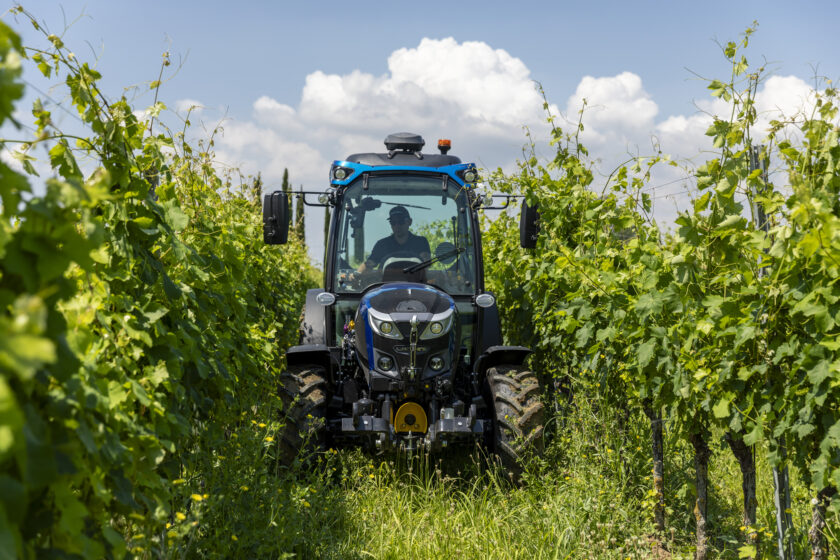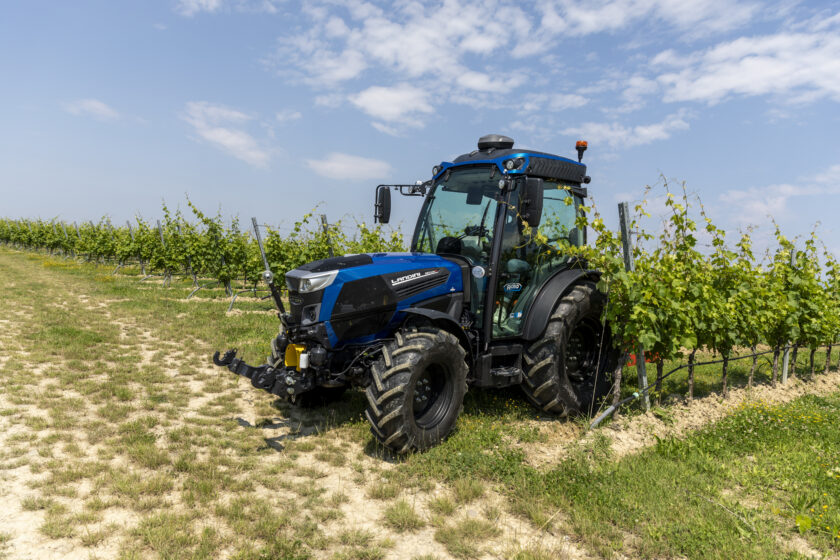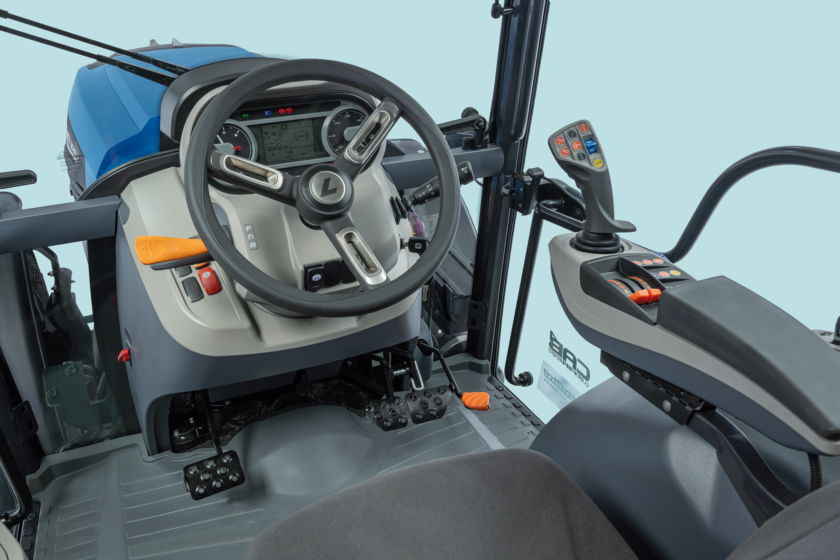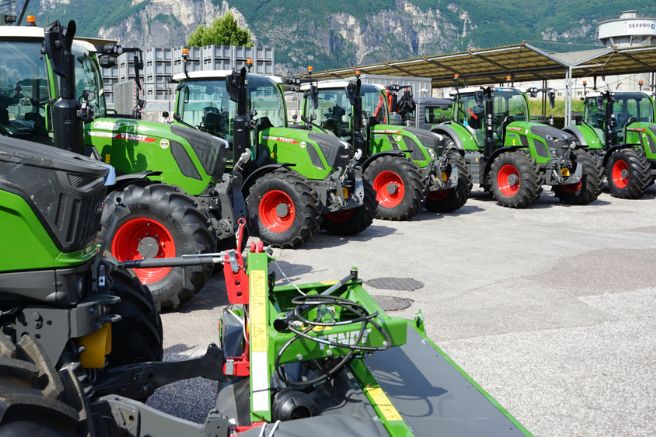Research activities by the Argo Tractors group continue tirelessly to enhance the automation standards of its specialist tractors.A digitization process that is about to be enriched with new and cutting-edge solutions, the latest of which has made the Landini “Rex4” specialist tractors nearly autonomous

Automating an open-field tractor is now relatively easy. The market offers all the necessary components, including complete systems that can even be installed on older tractors. Since open-field tractors are typically medium to large in size, integrating the system onboard doesn’t present particular challenges. A standard path accuracy of 15–30 centimeters is generally acceptable and can be refined with RTK correction during sowing. Things change significantly when moving from open-field operations to row-based work.
In this case, tractors are compact—sometimes only a meter wide—and their acceptable margin of trajectory error must be just a few centimeters. This presents a much more critical challenge. To tackle it effectively, the Argo Tractors group has chosen to develop its own proprietary autonomous systems specifically for specialist work environments. These systems are based on the latest hardware and software technologies developed in the automotive sector and are capable of operating at precision levels beyond the normal industry standards.
The “Advanced Driving System” (ADS) is designed with this in mind. Already available as an option on the Landini “Rex4,” it supports the operator both in trajectory control and in managing implements. Trajectory management is handled by a control unit interfaced with a fully integrated hydrostatic steering system.
This system not only manages row navigation but can also perform headland turns. It absorbs external shocks that would otherwise reach the steering wheel, adapts to terrain conditions, memorizes wheel positions when working on slopes, stiffens the steering as speed increases, automatically re-centers the wheels after a turn, and controls the stiffness of the front axle (if it’s a suspended type).

Operating a “Rex4” equipped with these systems is therefore convenient and comfortable—enhanced further by the presence of an all-in-one joystick that can control all hydraulic functions, up to seven electrohydraulic distributors, and, with dedicated activation, even the steering system itself.
These features are complemented by Landini’s software solutions, which connect the machine to a remote technical office. This allows real-time monitoring of each individual machine or the entire fleet, particularly when the tractor communicates with implements via the ISOBUS protocol.
The system manages vast amounts of data, which, when processed, power three main functionalities:
- Fleet Management – monitors the location and performance of each worksite in real time.
- Remote Diagnostics – supervises the functional status of each machine. If a parameter is off, technicians can run remote diagnostics or even intervene directly when the issue is software-related or resolvable through software. This minimizes unplanned downtime and enables predictive maintenance, triggered by real needs rather than fixed schedules.
- Landini Farm – offers even broader functionality. It enables the management of both administrative and operational farm tasks directly from the tractor. This includes optimizing pesticide and fertilizer application based on prescription maps and automatically updating the farm logbook. Users can also access on-farm product inventories and warehouse stock, including production-related inventory. Contractors can even issue invoices directly from the field after completing a job, without needing to return to the office.
Electronic Eyes
One of the key challenges faced by Landini technicians in making the “Rex4” specialist tractors autonomous is the lack of strong GPS signals in hilly or mountainous areas. To overcome this, Argo Tractors’ R&D department is not only working on satellite positioning systems but also developing direct vision systems, which combine the latest in computer vision, AI, and augmented reality. These systems analyze data collected from cameras and LiDAR sensors to monitor the area in front of the tractor in real time, improving both safety and efficiency.

During maneuvers, for instance, the system shows the operator the area the tractor will occupy even before it moves, warning of any detected obstacles and showing the distance between the machine and the object.
LiDAR sensors, on the other hand, allow the system to navigate autonomously at the maximum speed suitable for the ongoing task, maintaining the correct row distance even if GPS signals are lost. It’s as if the tractor had electronic eyes, guiding it precisely and keeping it centered between rows.
Lidar Sensors
LiDAR (Light Detection and Ranging) sensors measure the distance to an object by illuminating it with a laser beam and recording the time it takes for the light to reflect back. The technique is similar to radar, as both rely on the echo principle—but while radar uses radio waves, LiDAR uses pulsed light. Each system includes three core components: a laser, a return photodetector, and integrated reading circuits. The response times are in the order of nanoseconds—billionths of a second.







